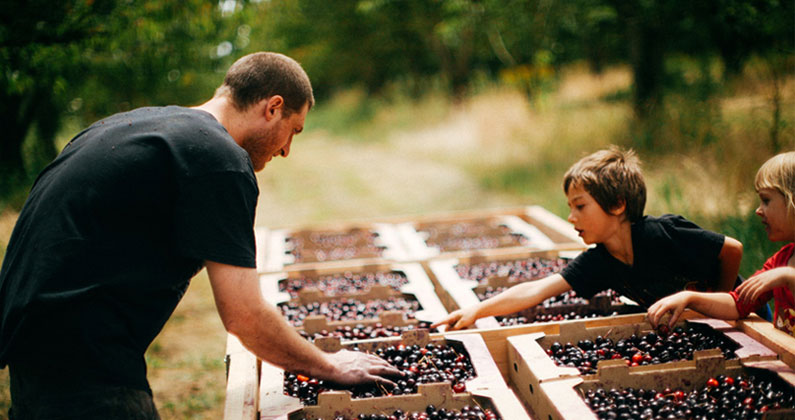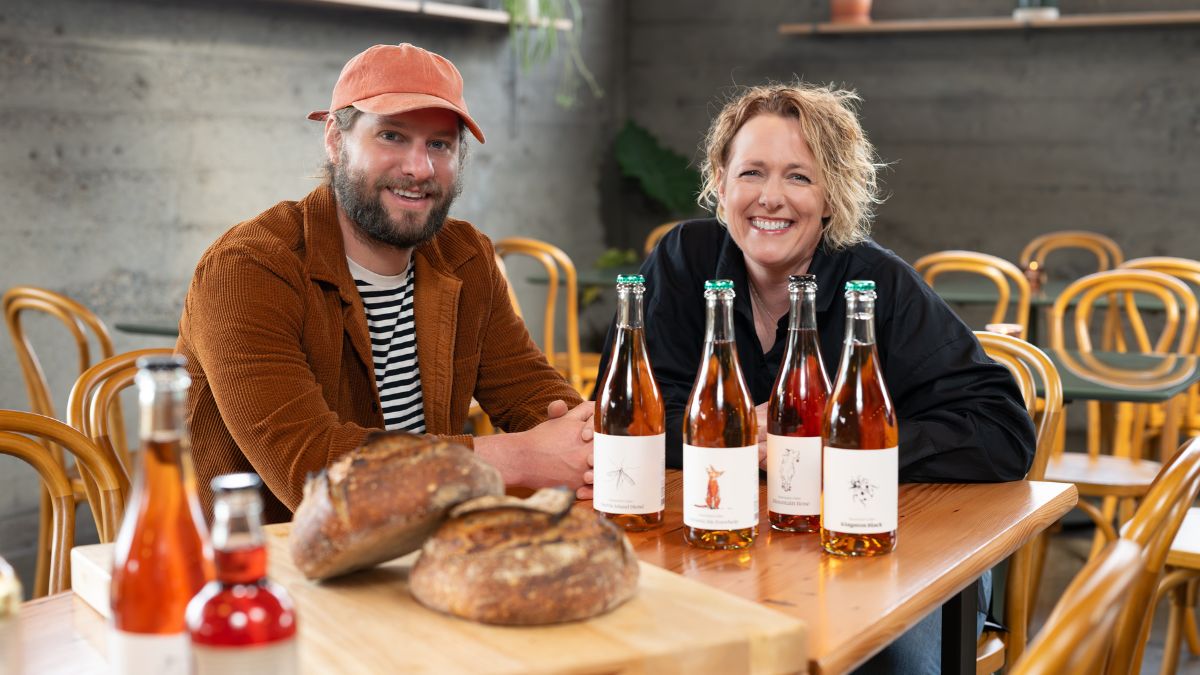Sean Kelly has worn many hats throughout his entrepreneurial life: traveling musician, Ayurvedic diet therapist, spiral stair builder, land conservancy and stewardship consultant. Today, each of these varied professions has managed to evolve into his post at WildCraft Cider Works, where he continues to lead and perform in many roles.
The Eugene, Oregon, “apple-to-shelf” business opened in 2013, with a focus on wild-harvested, self-distributed ciders. “WildCraft blossomed out of a passion for land stewardship and healthy wild resource management and utilization,” says Kelly. “The health and character of wild fermentation — our sole yeast source — is directly linked to the condition of the trees’ or plants’ surrounding habitat. Thus I place a lot of importance in unmanaged and untamed fruit. Over the years, I have discovered a plethora of high-quality, wild, fermentable ingredients that command extremely low environmental impact while beautifying our local landscape.”
Kelly is passionate about defending and caring for the Oregon landscape and hopes to see the new generation of small farmers continuing farming traditions and maintaining a direct connection to food. He believes that if any local community is going to rise to the occasion, Eugene is it.
“The southern Willamette Valley was once roughly 60 percent planted in orchards pre-1936,” he says. “Now, this number is very low in comparison, yet we are still able to harvest quantities suitable for providing our entire state with a true representation of what traditional cider on the West Coast may have tasted like.”
1) Which of your own current offerings are you digging the most?
Honestly, most of the time once a cider goes to bottle, I don’t revisit it other than to check conditioning stability. However, there are two current releases that pluck the heartstrings.
Delawaken is a Winesap cider that we cold-conditioned with rosebuds for two weeks, and then left to age in freshly emptied tequila barrels for five months with muddled wild black cap raspberries. The cider was then chilled and infused with a gentle touch of smoked cherry bomb chilies from Crossroads Farm, the farm in association with Agrarian Ales.
This cider was created and released for Dia de los Muertos in honor of my best friend and musical companion of many years, Jessiah Soul, who passed away in 2011. Steven Lopez, our mutual friend and an exceptional artist now based in LA, designed the label artwork.
Pisgah Heritage was the first release of a long-term project in collaboration with a good friend and once neighbor, Jason Blazer, who is the stewardship director for a local native plant nursery and habitat management program, Friends of Buford Park.
We began down the long road of contracting the first “commercial” harvest, outside of timber on Lane County Parks land in 2007. We were granted a temporary “pilot” contract in 2015 before receiving long-term approval to harvest under contract for the duration of the habitat restoration project on 6,500 acres of Mt. Pisgah and the subsequent Turtle Flats project.
A portion of the original 1890 Seavey cider orchard still remains, and we harvested its fruit to make this cider. Though the trees were originally targeted for removal in the scope of the restoration project, they have now been preserved due to the orchard’s historical and agricultural value.
We offered 20 cases of this cider to nonprofit donors as a gift, and $1 per bottle sold goes back to the native plant nursery. Aside from this cider being a symbol of achievement, it is absolutely delicious.
2) Any cidermaking pipe dreams you’re dying to make a reality?
I have been very excited for the longer four- and five-year spirit-fortified ciders that are about ready to release. Playing with pommeau and variations of the style has been very intriguing to me. We are releasing the first of the pommeau series in bottle this year, and there are some fun and unique creations to follow, including a 100 percent quince and pear cider developed in the same method and a product I am calling “Fig Poireaux-cino.” This will be a pear brandy aged a full year on three-month bletted green walnuts, glass-aged for an additional year, then aged six months on dehydrated figs. After straining the liqueur from the figs, it is then blended with a naturally clarified pear juice to 19 percent ABV and glass-age together for an additional year. I believe it will be a nice offering through the tasting room and for holidays. Plus, it is just a downright fun side project!
3) What non-cider beverage is in your glass most these days? What is your favorite way to enjoy it and where?
I find myself out at Agrarian Ales with the family every month or so, sipping farmhouse ales and [I] always have a great experience. I also spent an evening on my friend’s porch in Portland and got to taste a series of vermouths I hadn’t tried before. I have never really chosen vermouth as an option to drink on its own, but I found it fascinating and enjoyable.
As long as I am in a non-public, outside setting with a small group of family or friends, the craft of the non-cider beverage is apparent, and it does not remind me of work, I am at my happiest!
4) Favorite song, album or artist to jam out to while throwing a few down the hatch?
I enjoy a pretty wide variety of music. I do like multiple instrument percussion, so I tend to go in the Fela Kuti, Alpha Blondy, Amadou and Mariam direction. However, I have always been fond of older era underground hip-hop, so inevitably that presents itself. It is time and place dependent.






